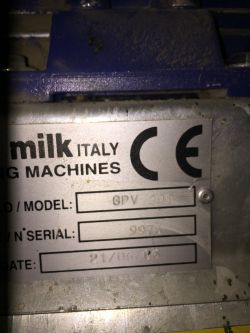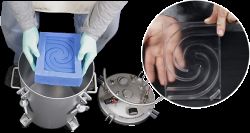Hello
I would like to ask how to effectively vent epoxy resin so that it is 100% free of air bubbles. I manage to get rid of 90% of the same method of mixing, heating the resin to about 40'C, and firing at the end with a burner. But the remaining 10% are really tiny bubbles often visible only in cold light. I tried to vacuum it, but I have problems with it. Temporarily as a vacuum container I wanted to use a jar with a valve, I used a milking machine CTA MILK GPV 200 to make a vacuum

But it is not able to create the necessary vacuum because nothing happens, the pressure it produces is too weak?
Which vacuum pump should I use? Will I buy enough for 300 PLN?
In the future I would like to buy such a vacuum chamber
/ Chamber-VACUUM-4-2l-to-degassing resin / link I will add that I use epidian 652 resin.
I would like to ask how to effectively vent epoxy resin so that it is 100% free of air bubbles. I manage to get rid of 90% of the same method of mixing, heating the resin to about 40'C, and firing at the end with a burner. But the remaining 10% are really tiny bubbles often visible only in cold light. I tried to vacuum it, but I have problems with it. Temporarily as a vacuum container I wanted to use a jar with a valve, I used a milking machine CTA MILK GPV 200 to make a vacuum

But it is not able to create the necessary vacuum because nothing happens, the pressure it produces is too weak?
Which vacuum pump should I use? Will I buy enough for 300 PLN?
In the future I would like to buy such a vacuum chamber
/ Chamber-VACUUM-4-2l-to-degassing resin / link I will add that I use epidian 652 resin.



